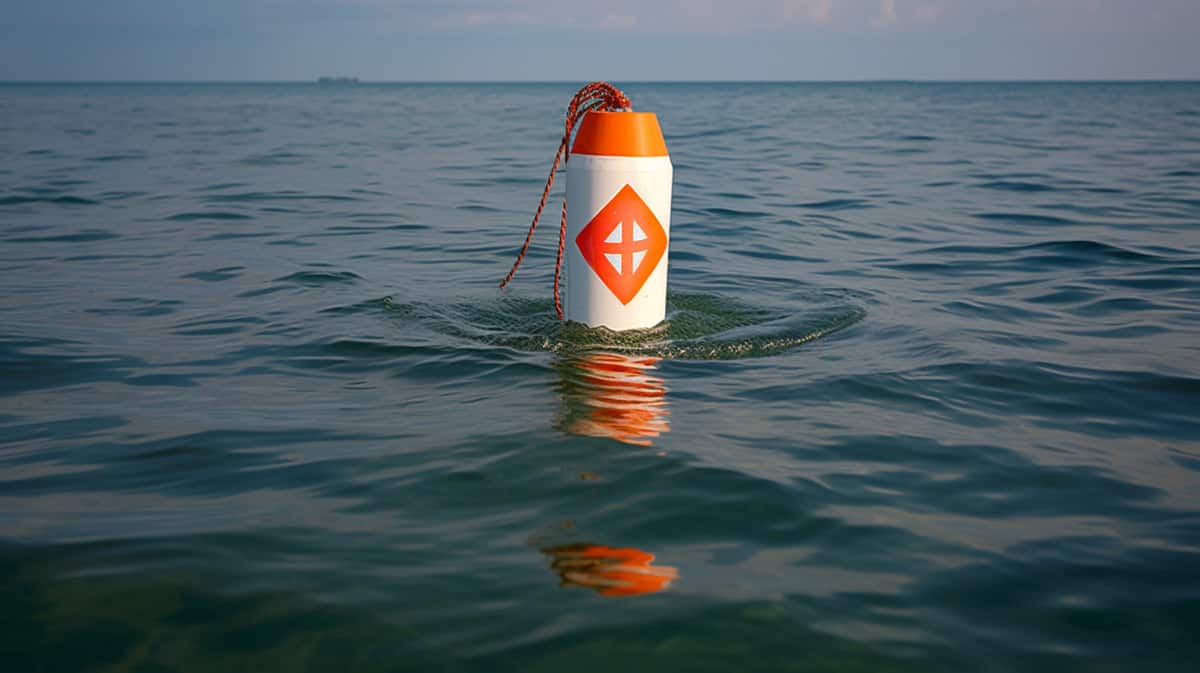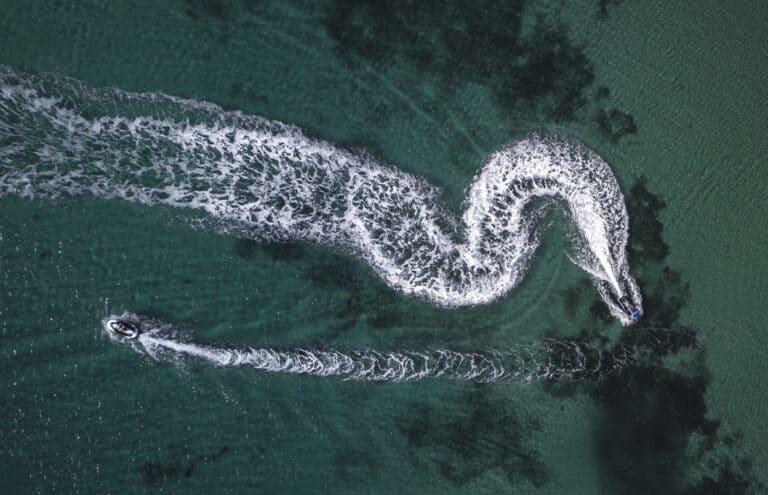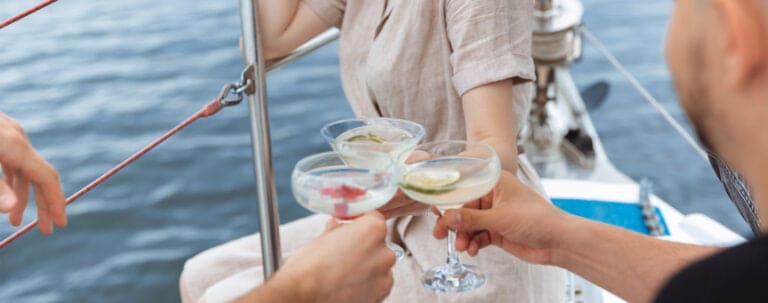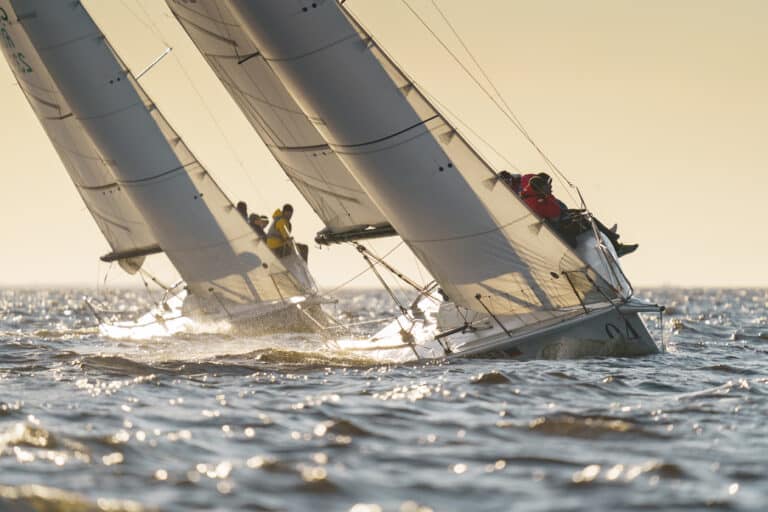If you’re new to sailing and boating, there are a few basic things that you need to learn before you do anything else.
Just like how driving has its own rules and regulations, so does navigate a boat.
And in the same way, you need to learn all the traffic signs and their meaning on the road, you need to learn what different buoys out at sea mean for boats.
If you see a white buoy with an orange crossed diamond, it means that it is marking the limits of a no boat area.
So if you see this buoy, you need to make sure that your boat stays out of that area, and does not enter it, or else you might be causing a serious safety risk to yourself and others.
There are many different reasons why a specific area might be a no boat area, and the buoys will usually be accompanied by a sign that states the reason.
One of the most common tends to be areas near a beach, marked as swim areas, so of course boats need to stay out.
What is a white buoy with an orange crossed diamond?
A buoy is a floating device that can be seen on the surface of the water out at sea, and it is usually anchored to the bottom so that it doesn’t drift away from its position with the currents.
There are many different types of buoys, with different colors and designs, that serve many different purposes.
Most are there to provide information and mark the limit of different specific areas close to beaches and ports, to keep both people and boats safe at all times.
If you see a white buoy with an orange crossed diamond, then this is a “keep out buoy”.
They are there to inform boats that they must keep out of the area that they are delimiting.
What is a white buoy with an orange crossed diamond?
A buoy is a floating device that can be seen on the surface of the water out at sea, and it is usually anchored to the bottom so that it doesn’t drift away from its position with the currents.
There are many different types of buoys, with different colors and designs, that serve many different purposes.
Most are there to provide information and mark the limit of different specific areas close to beaches and ports, to keep both people and boats safe at all times.
If you see a white buoy with an orange crossed diamond, then this is a “keep out buoy”.
They are there to inform boats that they must keep out of the area that they are delimiting.
They are very easy to recognize, as the buoy is completely white, with an orange diamond that contains an orange cross.
And there will also be two orange horizontal bands, at the top and bottom of the buoy.
Sometimes, they will also have an accompanying yellow light at the top, which will flash in a 4-second sequence. (This is especially useful for the buoy to be visible during night time).
Here is a photo of a keep out buoy, which as you can see, is white with the orange crossed diamond:
You See A White Buoy With An Orange Crossed Diamond. What Should You Do?
Now that you know the purpose of the white buoy with the orange crossed diamond, it is very important that you take heed of its meaning and follow the boating regulations.
So in this case, as it means that it is a no boat area from which you need to keep out, you need to make sure you stay out of the specific area it marks the limit of.
Usually, you will see this type of buoy from a pretty decent distance, so you shouldn’t have any problems whatsoever when it comes to maneuvering and correcting your course in time so that you avoid the area entirety.
Besides, most of the areas that keep out buoys limit, are usually pretty obvious, such as swimming areas near beaches, or specific restricted sections in ports.
They might also be marked out on maps, and you will likely have an indicator on your navigation system or GPS that alerts you of the buoy and of the no boat area so that you can navigate accordingly.
But what do you do if you, for some unlikely reason, miss the buoy and end up entering the no boat area with your boat?
This should never happen, and it’s usually very difficult to miss these types of buoys, as they’re very important and are often signaled in a very visible way.
But if you do end up entering an area, and you don’t spot the buoy until it’s too late, then this is what you should do:
- Slow down!
The first thing you absolutely need to do is slow down.
You’ve entered a no boat area, so you’re not supposed to be there, and there’s always a good reason for this.
It might be because it’s a swimming area, or because it’s a section reserved for smaller vessels or marine activities.
Slowing down will allow you to have a better reaction time if needed, and it will help you have a better awareness of your surroundings while you search for a way out of the situation.
- Find the nearest exit
You need to leave the area marked by the “keep out” buoys at once.
It’s not exactly easy to just reverse when on a boat, so instead find the nearest exit.
If you’ve just entered, it should be easy enough to quickly make your way back out by following the delimiting markers.
You could also try and turn around, to leave the same way you came in.
However, you have to be very careful when maneuvering in these areas, and act fast.
- Be on high alert to avoid accidents
This is kind of obvious, but if you’ve made the mistake of entering a no boat area, you need to be on high alert.
There’s a good reason for boats not being allowed there, and it’s usually to avoid serious accidents.
So while you find the fastest way out of there, you need to be hyper-aware of the surroundings and make sure you have enough reaction time to avoid any possible accident.
- Alert authorities if necessary
Sometimes, the authorities might alert you and ask why you’ve ignored the buoy.
If you explain the situation, they can help you handle it better, and ensure that everything gets back on track in a safe manner.




